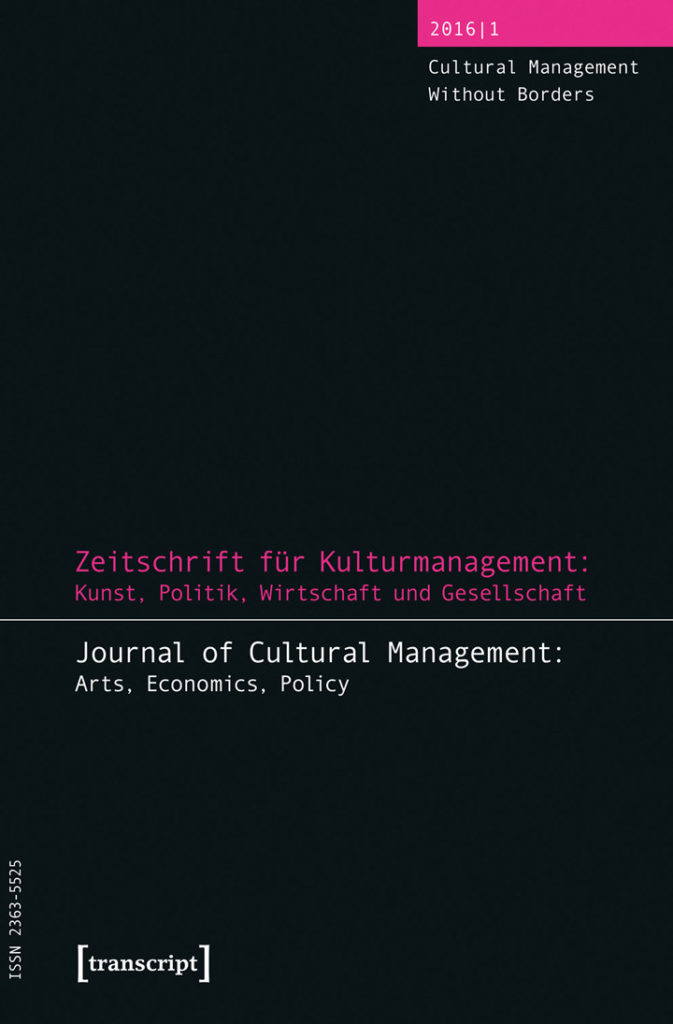Research Article
Art and Culture as an Urban Development Tool
A Diachronic Case Study
Abstract
Urban arts policies have been studied frequently by urban scholars but shifts in the respective usage of the arts have been neglected. Frequently, the discourse of the present on how the arts are employed for urban development prevails, tuning out – incorrectly – how this discourse has been shifted over the years. To fill this gap, the author interviewed local experts and compared their statements on the topic of arts and culture in Baltimore’s urban development over a period of more than twenty years, in 1988, 2004, and 2010. How did artists and arts managers, urban planners and urban politicians view the arts as a tool for Baltimore’s urban development during these years? The study uses a qualitative case study approach. As such it has involved an in-depth exploration of the strategic usages of arts and culture in urban contexts. It is a result of the study that the meaning of arts and culture as a factor for urban development has changed considerably between 1988 and 2010. Whereas this meaning was “elevating the masses by the arts” in 1988, it was “the arts as key for the creative city” in 2004, and “nurturing the creative edge of artists” in 2010.
Keywords
2016 (1)
Cultural Management Without Borders

Related Articles
Standortfaktor Kreativität
Probleme des kreativwirtschaftlichen ClusteringYearbook for Culture Management 2011
Research Article
Means-end-Evaluation am Beispiel des Technorama
Journal of Cultural Management 2017 (1)
Case Study
Struktur und Produktion eines Opernhauses und deren wechselseitige Beziehung
Journal of Cultural Management 2019 (1)
Essay
Journal of Cultural Management and Cultural Policy
Essay
Journal of Cultural Management and Cultural Policy 2024
Research Article
The Effect of COVID-19 on Cultural Funding and Policy in Iceland
Journal of Cultural Management and Cultural Policy
Research Article
© 2025, Journal of Cultural Management and Cultural Policy
Keywords
- Aesthetics
- Higher Education
- Cultural Diplomacy and Foreign Cultural Policy
- Occupation
- Career and Professional Role
- Audience Development
- Audience Studies and Visitor Studies
- Visitor Motivations
- Business
- Covid Pandemic
- Democracy
- Digitalization
- Diversity
- Third Sector
- Empirical Aesthetics
- Development
- Ethics
- Evaluation
- Field Theory
- Festival
- Film
- Federalism
- Community Arts
- Societal Change
- Ideology
- Staging
- Career
- Communication
- Concert
- Creative Industries
- Creativity
- Crisis
- Culture
- arts organizations, cultural organizations
- Cultural Participation
- Cultural Change
- Fincancing The Arts
- Cultural Promotion Law
- Cultural History
- Cultural Management
- Cultural Economy
- Cultural Organizations
- Art Education
- Cultural Policy
- Cultural Production
- Cultural Sociology
- Art Education
- Cultural Understanding
- Arts Administration
- Cultural Industry
- Cultural Sciences
- Art
- Art Field
- Arts Research
- Artists
- Artistic Research
- Artistic Reputation
- Arts Management
- Arts Organizations
- Art education
- Arts Marketing
- Arts Administration
- Curating
- Leadership
- Literature
- Advocacy
- Management
- Marketing
- Market
- Media
- Methods Development
- Mexico
- Monumentalizing
- Museum
- Music
- Non-Visitor Studies
- Opera
- Orchestra
- Organization
- Political Expression
- Post-truth Politics
- Professional Role
- Audience
- Audience Development
- Law
- Government
- Role
- Socially Engaged Art
- Social Cohesion
- Social Change
- Social Cohesion
- Non-visitor Socio-demographics
- Socioculture
- State
- Symbolic capital
- Dance
- Participatory Justice
- Theatre
- Theatre Governance
- Theory Development
- Tourism
- Transformation
- Survey
- Entrepreneurship
- Urbanism
- Civil Society


